Category: Cardinal Courses
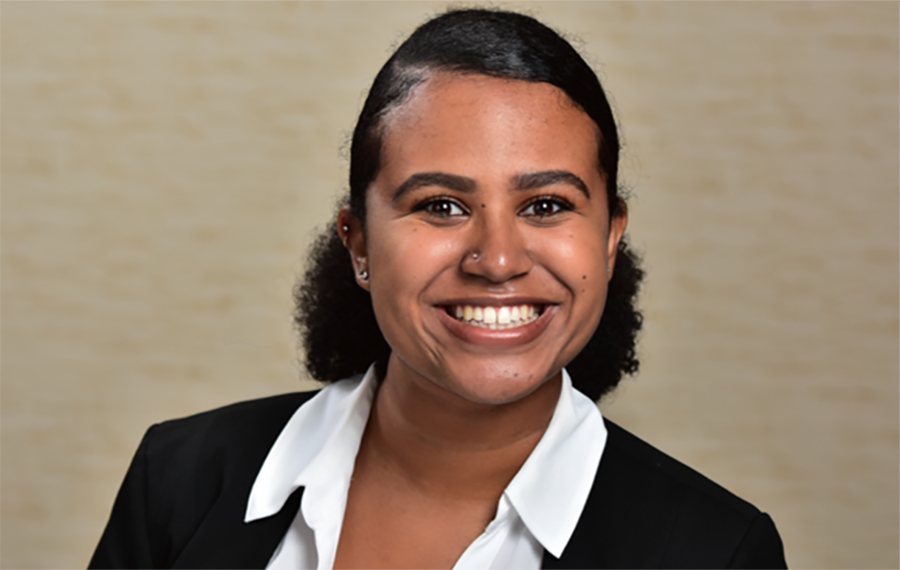
Redesigning Justice: Transforming Housing Courts to Housing Centers
By Leya Elias, ’21
Only at Stanford could I take a class that allowed me to use legal design to create and test innovative solutions to a pressing challenge in my hometown: homelessness.
In the summer of 2019, I interned with the Public Rights Project, where I learned about the under-enforcement of consumer protection laws and the cracks within the civil justice system. After leaving my internship, I craved an opportunity that would teach me more about the civil court system, while also allowing me to work alongside community members to make improvements where needed. Luckily, I found a Cardinal Course called LAW806Y: Justice by Design: Eviction and Debt Collection. This course gave me the opportunity to explore my interests in civil courts and economic justice through a legal justice lens and design-thinking practice.
Through the class, I got to work alongside a community partner, the Judicial Council of California, and spend time learning from people—community organizers, attorneys, court staff, policymakers, landlords, and tenants—who have all touched the eviction system, for better or for worse. One stark injustice that consistently came up in all of our interviews was the disparity in access to legal representation in the court system and how, as a result, many tenants face little chance at avoiding an eviction.
While the majority of tenants do not have access to attorneys, over 60 percent of those who do are able to successfully avoid evictions. Access to legal representation is a huge unmet need for populations most at risk for homelessness. In addition to the inaccessibility of civil legal representation, tenants experiencing eviction are not only at high risk for homelessness, but are also missing a centralized support system dedicated to their success and well-being.
Since 2018, homelessness has increased 17 percent and 43 percent in San Francisco and Alameda, respectively. Witnessing the changes in my own city, I became interested in how the court could serve as the center of preventative support systems for not only those experiencing evictions, but those at risk for homelessness. Through the course, I had the opportunity to work on a facilitated holistic social services and legal aid program based in courthouses that offers resources such as rental assistance, skills training, and relocation programs.
As I work on testing my prototype alongside community partners and the Judicial Council of California, I am motivated by the potential for this program to decrease the rampant displacement across Bay Area communities. As a new family member or friend experiences eviction, displacement, or homelessness, the work I am doing in this class becomes even more pertinent and leaves me feeling honored to be able to think about how I can help.
Before the class, I saw becoming a practicing attorney as my only path toward mitigating the inaccessibility of legal representation. However, the course’s application of design-thinking to legal systems has equipped me with an innovative toolbox with which to approach systematic legal issues as an attorney. As I look forward to my senior year, I am excited to take this new experience of social justice-oriented design-thinking to my work in and out of the classroom. I am empowered not only to become an attorney, but to become an attorney capable of redesigning our country’s legal system into one that works for our most at-risk communities.

Leya Elias, ’21, grew up in San Francisco, CA. At Stanford, she studies psychology with a minor in political science and African & African American Studies. Leya completed a Cardinal Quarter in summer 2018 with the Ghana Center for Democratic Development and worked with the Public Rights Project in Oakland, CA during summer 2019 with the support of Emerson Collective. Leya is co-president of the Stanford Ethiopian & Eritrean Students’ Association and the Stanford Black Pre-Law Society, and has served as chair of the ASSU Undergraduate Senate as well as an Institute for Diversity in the Arts fellow.
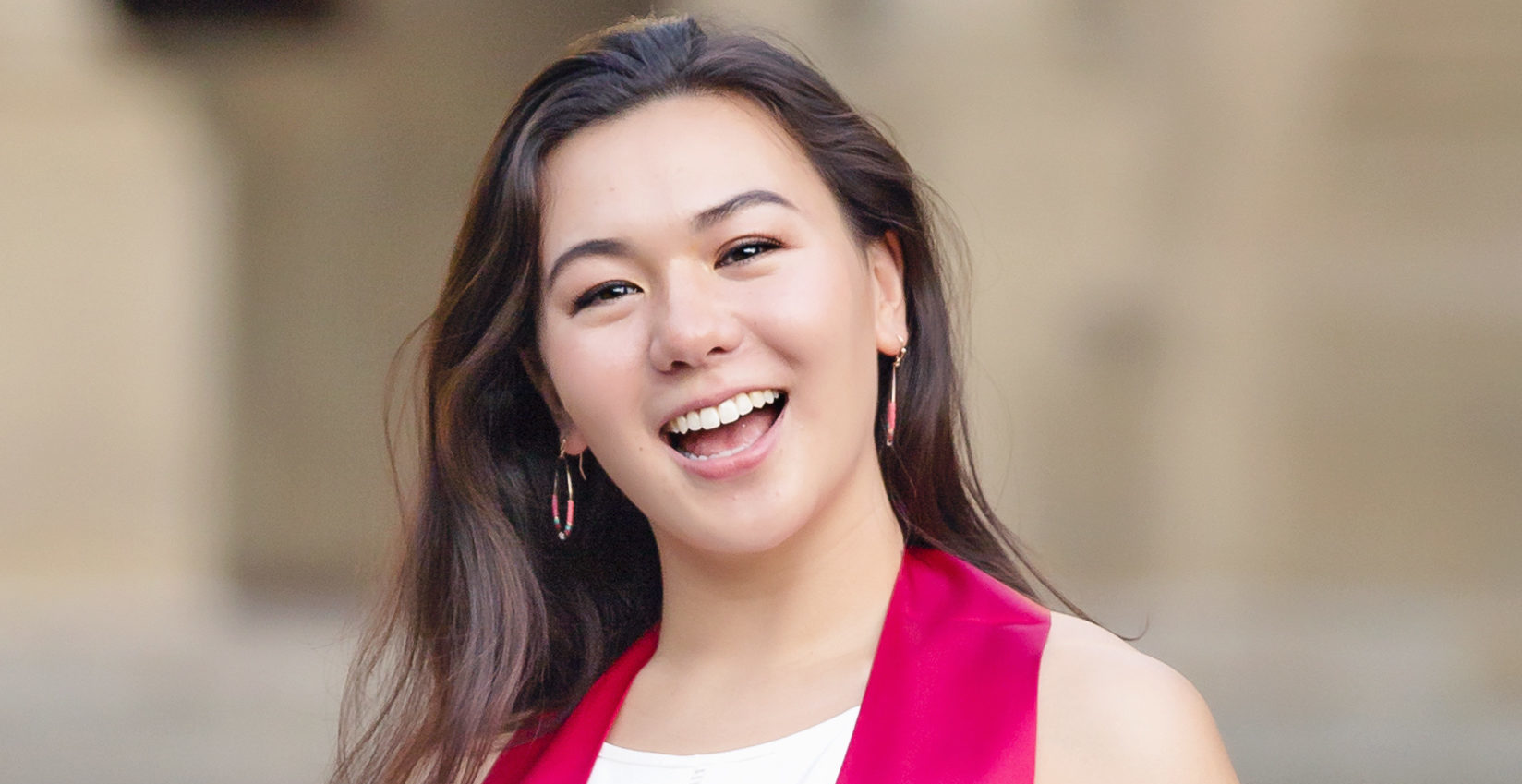
How an Urban Studies Class Made Me a Better Engineer
By Katherine Erdman, BS ’19, MS ’20
As the countdown to graduation began, I, like many other Stanford seniors, was eager to complete my general education Ways of Thinking/Ways of Doing. As I planned my fall quarter, I was on the hunt for a class that satisfied my last unfulfilled requirement: Engaging Diversity. There were almost 200 classes to choose from, but I settled on Urban Studies 164: Sustainable Cities. I had a mild interest in environmental technology, so I decided to give it a go.
On the first day of class, I was surprised that the focus of the course wasn’t on hydrogen fuel cells and electric cars. Rather, environmental health was just one of four aspects of sustainability we would be tackling, in addition to cultural continuity, social equity, and economic vitality. This broadened definition of sustainability, going beyond greenhouse gases and air quality indexes, was especially meaningful on the day we talked about transportation in the Bay Area. Like many other computer science students, I spent a summer interning at a large technology firm just miles from campus. I did not have a car and benefited from the shuttle service provided as part of the job. Every morning, I walked a few minutes to the nearest stop, hopped on the bus, and arrived to work without issue. I brought this up as an avenue to increase sustainability. The buses were quite full and eliminated at least hundreds, if not thousands, of mostly single-occupancy cars from the road. While my classmates agreed that the shuttles helped with environmental health, I was challenged to also consider the soaring housing prices near newly placed shuttle stops that make longtime residents unable to afford to stay. They are often replaced by tech workers, eager to be closer to the shuttle stop and able to afford higher rent. Perhaps certain shuttle stops trade off cultural continuity in pursuit of sustainability?
Through many eye-opening discussions, I more clearly saw the effects of sustainability efforts within the social and cultural realms by the end of the quarter. I walked away with a new perspective, which I applied to my senior project class CS210: Software Project Experience with Corporate Partners. My CS210 team partnered with Oracle and was given the task of creating social good technology. We decided to tackle the issue of employment opportunities for formerly incarcerated individuals. Within this space, it’s easy to identify unmet needs, such as the need for technological education for someone who has been disconnected from the job market for a number of years or the need for mock interviews for someone who has never formally applied for a job before. However, my experience in Urban Studies 164 helped me understand how any solution has to fit within a larger ecosystem. I found that my team and I were challenged to look beyond economic vitality and consider the cultural continuity and social equity concerns that our solution had to address. Whether integrating our solution into the parole preparation process for the incarcerated in Australia or modifying the product’s user interface to be approachable for first-time digital users, our team attempted to address cultural and social issues that appear tangential, but are deeply connected to the product’s success.

Katherine Erdman, BS ’19, is a coterminal master’s student in computer science from Ellicott City, Maryland. During her senior year, she took Urban Studies 164: Sustainable Cities, a Cardinal Course that introduces students to sustainability concepts and urban planning as a tool for determining sustainable outcomes in the Bay Area. Katherine has been involved in the Business Association of Stanford Entrepreneurial Students, SHIFT: Healthcare Innovation @ Stanford, and she++. She is also a member of the Student Alumni Council and the Viennese Ball Steering Committee.
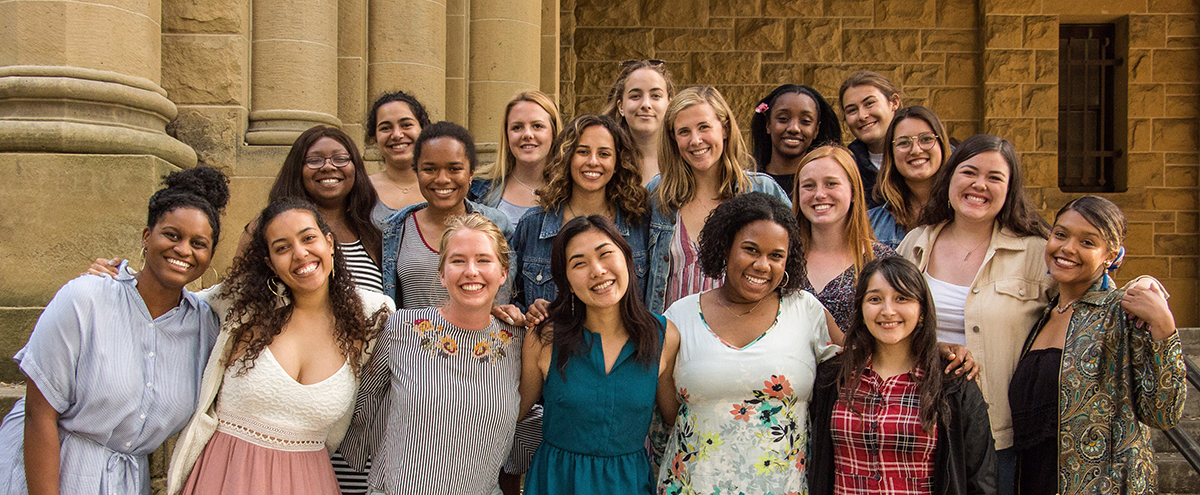
Reflecting on Four Years of Cardinal Service
By Callan Showers, ’19
The Cardinal Service initiative began my freshman year, in the fall of 2015. I am so thankful I made a lasting service commitment right away, by joining a Cardinal Commitment organization called Women and Youth Supporting Each Other (WYSE).
The Stanford women in WYSE facilitate weekly mentorship sessions for middle school girls in East Palo Alto and discuss topics like puberty, women’s empowerment, race and discrimination, and sexual health.
I was persuaded to apply because it seemed like a way for me to expand my sense of community and purpose at and around Stanford. This couldn’t have been truer. Engaging with the East Palo Alto community and its middle schoolers through WYSE has taught me innumerable lessons about cultural humility, community action, education justice, and leadership.
I also had the chance to engage with the broader Bay Area through the Cardinal Course, From Gold Rush to Google Bus: History of San Francisco. We worked with a community partner to identify little-known stories about the city’s history and write articles for an online historical database. I got to nurture intellectual interests through experiences such as digging through archives in the San Francisco Public Library, while also contributing to a community-based project with lasting impact. It also helped me realize that you don’t have to be from a place to help shape its history.
While these experiences connected me to parts of the local area, Cardinal Service programs also helped me serve in the place I have always called home: Minnesota.
The summer after my sophomore year, I received the Advancing Gender Equity Fellowship from the Haas Center and Women’s Community Center to work as a legal intern at Gender Justice, a public interest law firm in St. Paul. Gender Justice represents clients who have experienced gender discrimination or sexual harassment, and I got an inside look into legal proceedings such as depositions, while also getting the chance to draft policy advocacy memos and see the inner workings of a nonprofit.
This Cardinal Quarter inspired me to pursue public interest law because of how well it fit my skills and my desire to make change. I am pursuing a two-year position as a paralegal at a civil rights law firm in Washington, D.C. I truly believe without the values of community-engaged learning experiences and the way I saw my personal and professional values and skills align at Gender Justice, I would be less prepared to enter into this work and my life beyond.
 Callan Showers, ’19, was in the first class at Stanford to experience four years of Cardinal Service. She co-led the student organization Women and Youth Supporting Each Other (WYSE). Callan also completed a Cardinal Quarter with Gender Justice, a nonprofit law firm, and a Cardinal Quarter from the Bill Lane Center for the American West serving with the French cinema house Galatée Films.
Callan Showers, ’19, was in the first class at Stanford to experience four years of Cardinal Service. She co-led the student organization Women and Youth Supporting Each Other (WYSE). Callan also completed a Cardinal Quarter with Gender Justice, a nonprofit law firm, and a Cardinal Quarter from the Bill Lane Center for the American West serving with the French cinema house Galatée Films.
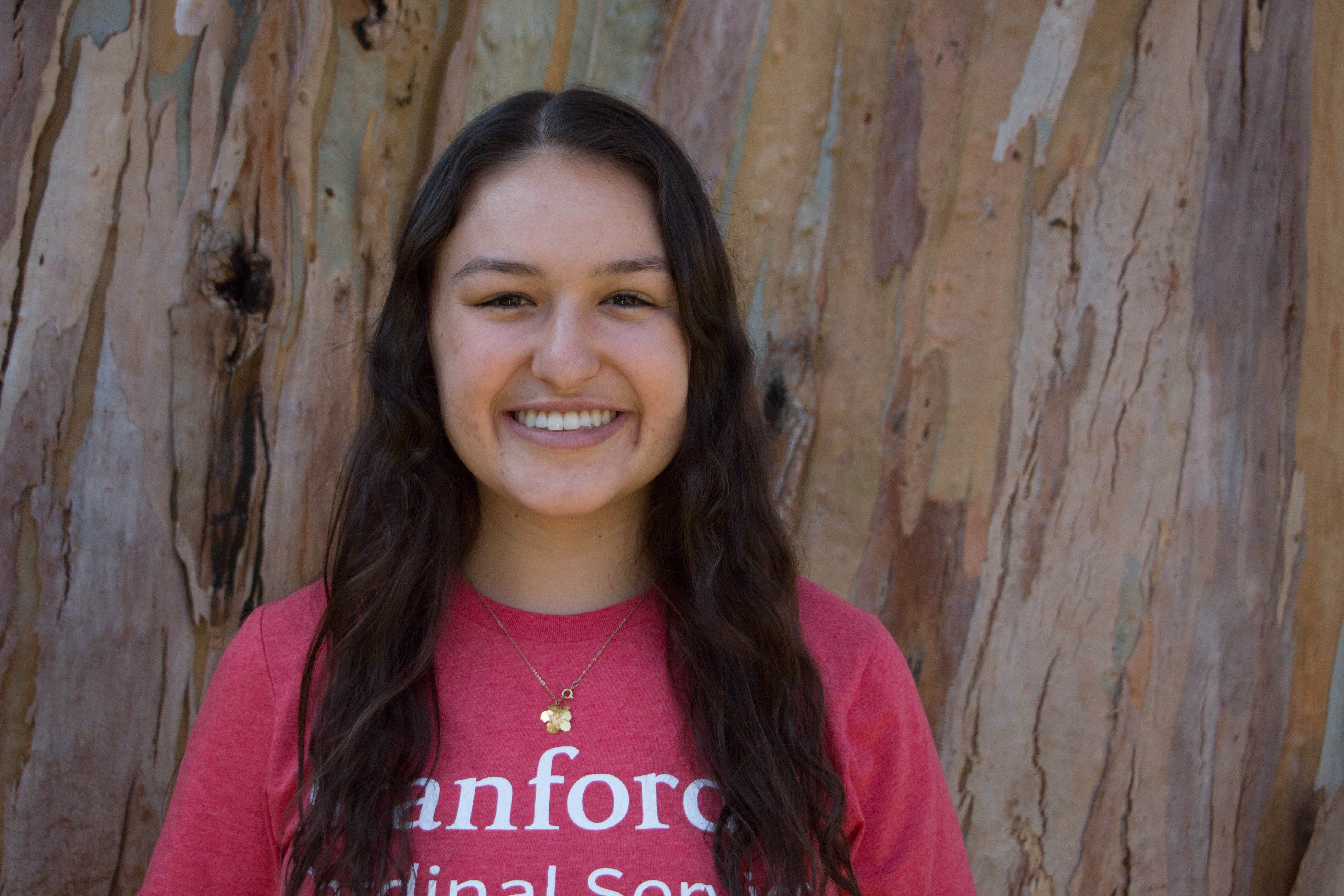
Beyond the Stethoscope: Addressing the Social Determinants of Health
By Nikki Apana, ’20
For my uncle, no level of mental health treatment could cure his chronic homelessness. No number of visits to the psychiatrist could shield him from the physical and psychological trauma that accompany living on the street. Having witnessed the effects of homelessness on my uncle’s overall wellbeing, I became deeply committed to addressing healthcare disparities through medicine and public health.
At Stanford, I sought out courses that could help me understand my uncle’s experience and how to help. My frosh year I found a Cardinal Course that allowed me to combine my academic interests in public health and passion for public service: Social Emergency Medicine and Community Engagement. In the class, we discussed how socioeconomic status affects health status, and I got to see how these trends play out in the emergency room (ER) through a partnership with our partner organization, Stanford Health Advocacy and Research in the Emergency Department, or SHAR(ED).
The emergency room is a safety net. When people don’t have anywhere else to go, that’s where they end up. Sometimes emergency room patients come in for something as minor as a cold—or a serious condition after a minor condition goes unmanaged for a long time. The hospital ranks the severity of a patient’s condition on a scale of one to five, with one being the most severe. But the ranking says little about the social causes of their illness.
As a volunteer, I screened patients at the Stanford Hospital Emergency Department for social needs that could negatively affect their health. Some of the most common issues included the lack of affordable housing, difficulty accessing a primary care physician, high cost of childcare, lack of healthy food, and difficulty paying utility bills. At the end of each visit, I referred patients to local organizations to help reduce the burden of these needs on their overall health.
I valued providing patients with resources to help them cope with different pressures and reduce the frequency of their visits to the emergency room. However, in medicine there is still a disconnect between physicians and patients: ER physicians are there to only treat serious medical conditions, while patients want any treatment.
During one of my volunteer shifts, I was with a Spanish-speaking patient and a nurse asked if I spoke Spanish. I nodded.
“Oh great! Can you translate for me?” the nurse asked. Then she quickly rattled off a number of test results to me. “Her CT scans, blood test, and everything else look normal. Can you tell the patient that everything is fine and that she should just go see her primary care physician?”
I did as the nurse said. Then, the patient looked at me and asked, “Are you sure there’s nothing wrong?”
From an operational standpoint, the nurse was right; the patient should have gone to a primary care physician instead of the ER. But this patient was like many others in the ER who have never heard of a primary care physician or simply cannot afford it.
As I learned from a young age, addressing medical issues requires so much more than scrutinizing physiological symptoms and abnormalities. Access to healthy food, affordable housing, and high-quality healthcare all contribute to individual health and wellbeing and can prevent frequent visits to the emergency department.
After taking this Cardinal Course, I pursued honors thesis research on the barriers patients face in seeking healthcare—research that I plan to use to advocate for policies that ensure patients’ basic right to high-quality healthcare.
As I look beyond graduation, I hope to apply to medical school and become a primary care physician, with the knowledge that a state of complete health cannot be achieved without remediating the underlying social challenges that patients face everyday.
Nikki Apana, ’20, is a premed student studying human biology, with a concentration in race, ethnicity, social class, and public health. She is a Cardinal Service Peer Advisor, Community-Based Research Fellow, volunteer with SHAR(ED) and, patient health advocate with Cardinal Free Clinics. She is also involved with Kaorihiva, the Polynesian dance group at Stanford. Nikki is from Concord, CA.
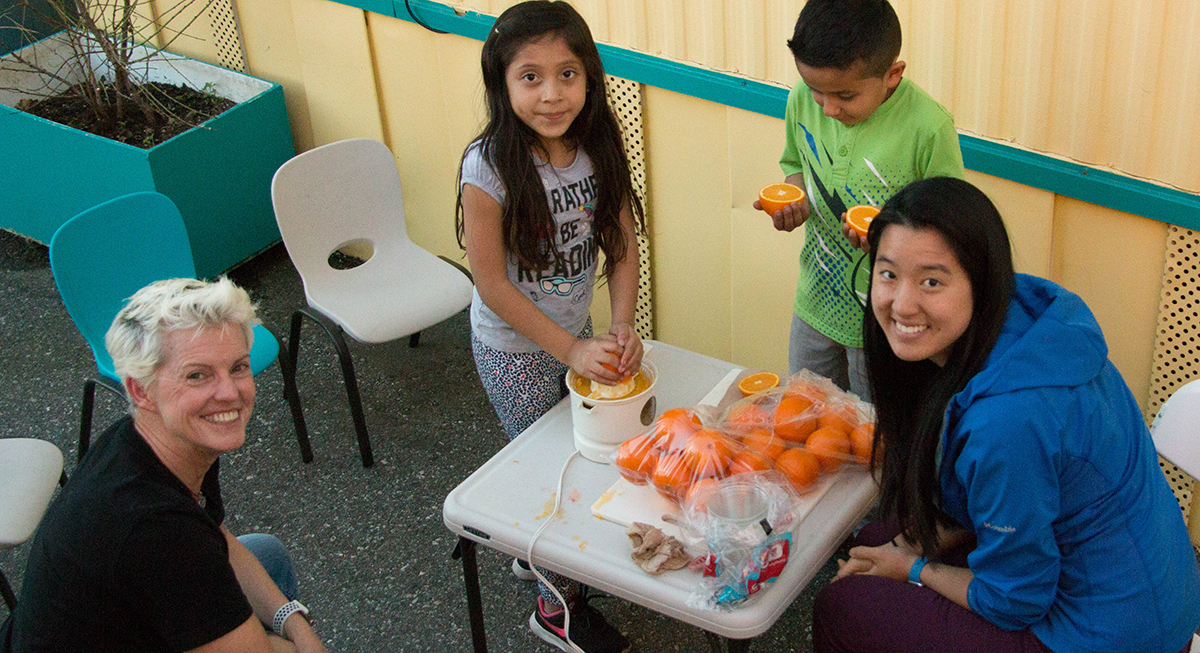
Bridging Palo Alto’s education gap
By Ezra Yoseph, ’21 (biology/neurobiology)
Following years of negotiations between its previous owner and Santa Clara County, Buena Vista Mobile Park survives as one of the few remaining options for affordable housing in Palo Alto. Unfortunately, the 400+ residents continue to be stricken by the harsh ramifications of educational inequity. Noticing that there were several academic outreach programs offered to secondary students but a lack of programs servicing elementary school students, Dr. Deborah Farrington launched Buena Vista’s first homework club for younger children and enlisted Stanford University students as supporters and tutors.

My first quarter with the Buena Vista Homework Club (BVHC), through a Cardinal Course, Well-Being for Immigrant Children and Youth, instilled in me the importance of getting to know students and making time for conversation in between tutoring sessions. Understanding the backgrounds my students came from allowed me to come up with nuanced and effective goals for each meeting. Simply put, access to educational resources at home is far from uniform, which inevitably leads to an immense number of low-income students getting left behind very early on. As we look forward to mitigating Palo Alto’s education gap, we must sustain and promote programs like BVHC that support learning at a young age as opposed to waiting until it’s too late.
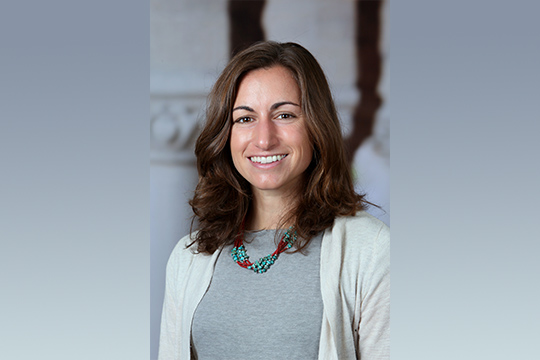
Examining environmental issues in the classroom
By Lynne Zummo, MA ’15 (Curriculum Studies and Teacher Education in Science Education)
Their big smiles and enthusiastic shouts say it all—kids love learning at NatureBridge. From my first observation of students at the Golden Gate campus, which overlooks Rodeo Beach and the steep cliffs of the Marin Headlands, I knew that NatureBridge was a special place. Wandering along the ocean and through densely forested groves, children here are happy and excited to learn about the natural world. One hope of NatureBridge is that this enthusiasm for nature persists beyond the residential experience, as students return to classrooms.
Having taught science, I endeavored to work with NatureBridge to develop a standards-based curriculum that could be given to schools to implement in the classroom, following field trips. Collaborating with the staff at NatureBridge, as well as local teachers, I developed a curriculum focused on connecting students’ NatureBridge experience to their daily lives. This interdisciplinary curriculum seeks to help students understand water issues in California through multiple academic lenses. Building on knowledge and experience gained during at NatureBridge, the curriculum helps students examine a relevant issue from many perspectives. We plan to pilot the curriculum next spring—I hope that it makes a meaningful contribution to both NatureBridge and local students.
